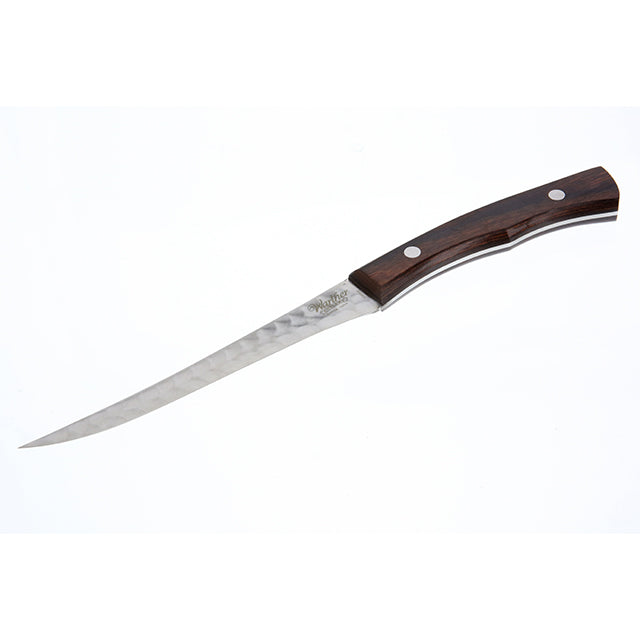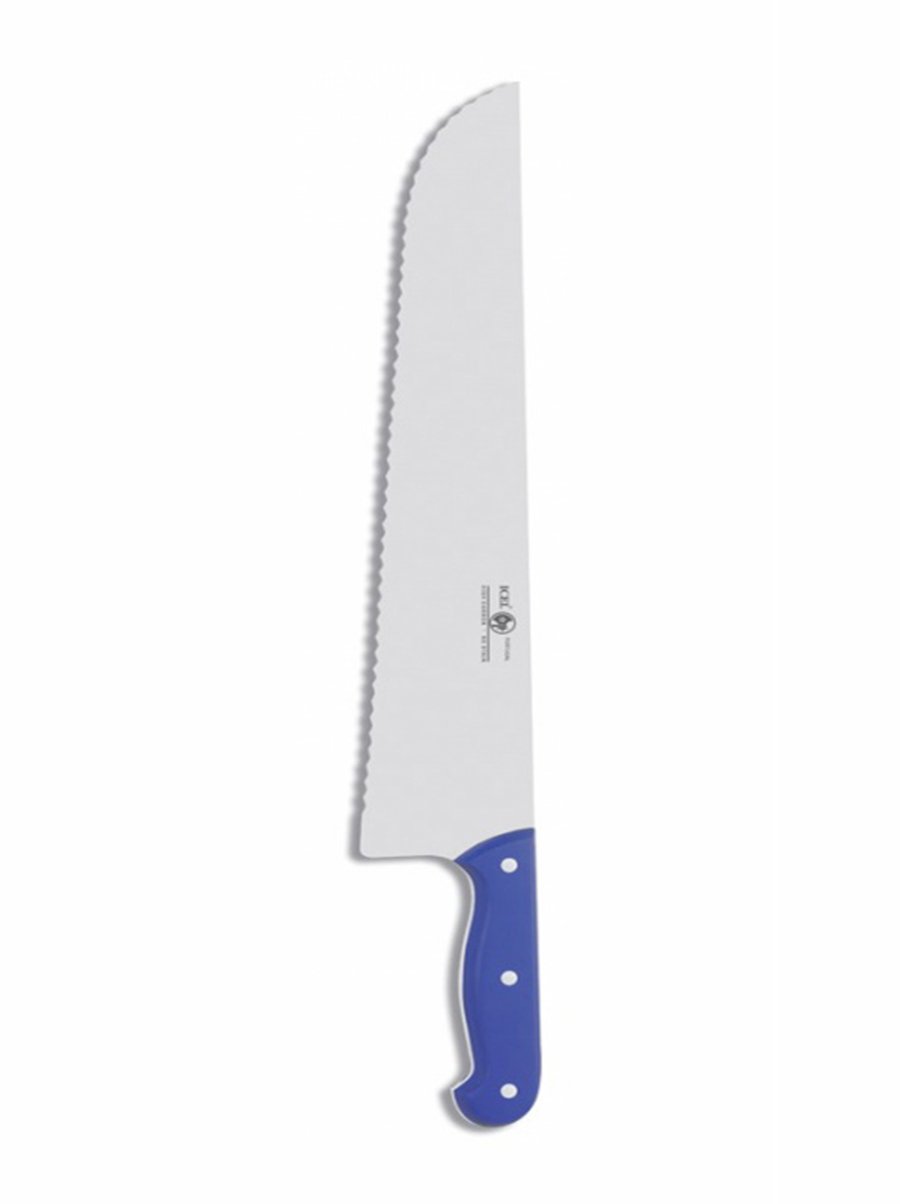How to maintain a fish knife for long-lasting performance
Wiki Article
Discover the Necessary Functions to Seek in a Top-Quality Fish Knife
When picking a fish knife, several crucial functions require interest. The blade product dramatically impacts longevity and sharpness, while flexibility plays an important role in accuracy. In addition, the deal with layout impacts convenience throughout expanded use. Side retention and security features are also vital for practical usage. Comprehending these components will certainly assist consumers toward making an enlightened choice, yet the subtleties of their significance may not be right away clear.Blade Material and Building And Construction
The effectiveness of a fish knife largely rests on its blade material and building and construction - fish knife. Premium fish blades typically include blades made from stainless-steel, high-carbon steel, or a combination of both. Stainless-steel is favored for its deterioration resistance and reduced maintenance, making it ideal for freshwater and deep sea environments. High-carbon steel, while vulnerable to rusting, uses exceptional intensity and edge retention, appealing to those that prioritize reducing performanceThe building and construction of the blade additionally plays an important role in its efficiency. Full-tang blades, which extend the entire length of the take care of, offer boosted strength and equilibrium. In contrast, partial-tang blades might compromise durability. Furthermore, the thickness of the blade must be thought about, as thinner blades enable more exact cuts, necessary for delicate fish filleting. Eventually, a well-constructed blade, making use of the ideal products, is basic for accomplishing the most effective results when preparing fish.
Blade Adaptability and Size
Blade versatility and size are essential elements that substantially influence the efficiency of a fish knife. A flexible blade permits exact cuts and the capacity to maneuver around bones and skin, making it vital for filleting fish successfully. The appropriate amount of flexibility can enhance control, enabling the individual to accomplish clean, smooth cuts with minimal initiative.In terms of length, fish knives commonly vary from 6 to 9 inches. A longer blade is advantageous for larger fish, providing the reach required for reliable filleting. Conversely, a much shorter blade uses ability to move, making it suitable for smaller sized fish or complex jobs.
Eventually, the option of versatility and length need to straighten with the certain angling requirements and preferences of the user. A well-balanced mix of these qualities makes certain optimal efficiency, improving the total fish prep work experience.
Manage Design and Convenience
A properly designed deal with is necessary for making sure convenience and control when using a fish knife. The handle need to fit firmly in the hand, enabling a firm grip throughout complex jobs such as filleting or skinning fish. Products like rubber, wood, or composite give different degrees of convenience and traction, affecting the user's experience.Ergonomic features are likewise critical; contours that adhere to the natural form of the hand can reduce tiredness throughout extended usage. Additionally, the manage's texture plays a substantial role in preventing slippage, especially when collaborating with wet hands.
Weight circulation is an additional factor that contributes to the overall balance of the knife, improving maneuverability. A comfortable manage layout not just enhances performance but likewise promotes security, as a safe and secure hold lessens the threat of accidents (fish knife). Eventually, a thoughtful manage layout can considerably elevate the effectiveness of a fish knife in culinary applications
Edge Retention and Honing
While making use of a fish knife, maintaining a sharp edge is vital for attaining tidy cuts and precise filleting. A high quality fish knife must display outstanding edge retention, permitting it to stay sharp through numerous uses. This characteristic is usually identified by the sort of steel utilized in the blade; high-carbon stainless steel is frequently preferred as a result of its equilibrium of solidity and rust resistance.
Safety Functions and Sheath Options
Many safety and security attributes and sheath alternatives are vital considerations when choosing a fish knife. A secure and ergonomic take care of minimizes the danger of slips during usage, boosting customer safety. Distinctive holds and finger guards additionally avoid mishaps, permitting for far better control while filleting fish.Additionally, a blunt pointer can lessen the danger of leak injuries, making it a safer option for beginner customers.
Sheath options additionally play an important function in safety. A properly designed sheath safeguards the blade, preventing accidental cuts when the knife is stored or moved. Sheaths made from sturdy materials, such as nylon or tough plastic, offer included protection versus environmental aspects.
Some sheaths include belt clips or loopholes, guaranteeing the knife is conveniently available while remaining safe and secure. Eventually, prioritizing safety and security functions and sheath options adds significantly to the total functionality and individual experience of a fish knife.
Regularly Asked Questions
What Is the Ideal Brand for Fish Knives?
The most effective brand for fish knives frequently differs by preference, but prominent names like Wüsthof, Victorinox, and Avoid are often advised for their toughness, workmanship, and intensity, making them top selections amongst culinary fanatics and professionals alike.Can Fish Knives Be Made Use Of for Other Kinds of Fish?
Fish blades can without a doubt be made use of for various other kinds of fish. Their layout and get more info sharpness make them flexible enough for numerous fish varieties, improving the overall experience of filleting and preparing various kinds of fish and shellfish.
How Do I Clean and Preserve My Fish Knife?
To keep a fish and clean up knife, wash it with cozy water after usage, gently scrub with moderate soap, completely dry thoroughly, and store in a protective sheath to protect against damages and corrosion. Routine developing is important.Exist Fish Knives Particularly for Left-Handed Users?
Yes, there are fish blades created especially for left-handed customers. These blades feature reversed blade angles and ergonomic deals with, making certain convenience and performance for left-handed people while filleting and preparing fish. Quality alternatives are readily available from various producers.What Is the Price Range for Quality Fish Knives?
Quality fish knives typically range from $20 to $150, relying on materials, brand track record, and workmanship. Higher-end alternatives might include exceptional ergonomics and specific designs, while affordable choices still offer satisfying performance for informal individuals.The effectiveness of a fish knife mainly pivots on its blade material and building. High-grade fish knives normally include blades made from stainless steel, high-carbon steel, or a combination of both. Blade adaptability and length are essential variables that considerably influence the efficiency of a fish knife. Fish knives can indeed be utilized for other kinds of fish. These knives include reversed blade angles and ergonomic deals with, ensuring comfort and performance for left-handed people while filleting and preparing fish.
Report this wiki page